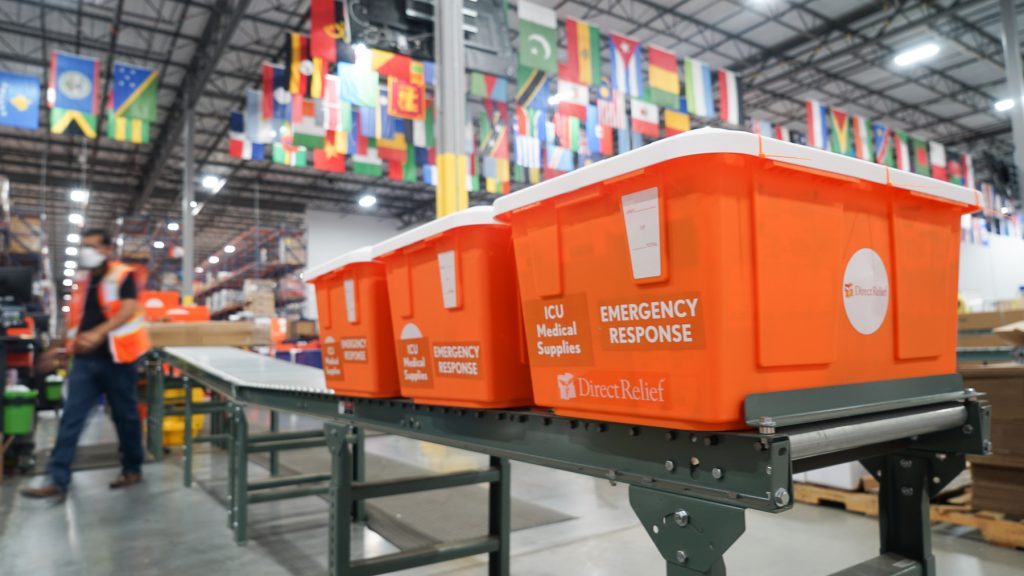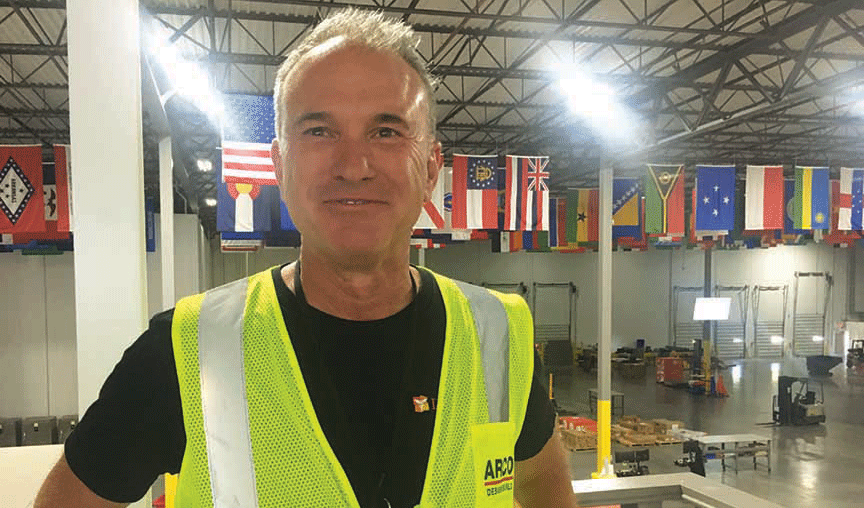Direct Relief tallies $2B in aid to U.S. nonprofits

Santa Barbara-based Direct Relief is known for its giving nature, especially on a global scale, but in the last 15 years, it has made a more concerted effort to address the unmet needs of millions here at home — meaning both the U.S. and the Central Coast.
On Nov. 21, the global nonprofit announced it had donated and delivered more than $2 billion in medicine and medical supplies since 2008 to address chronic gaps in the U.S. healthcare system.
This also includes over $25 million given to over 90 healthcare and non-profit organizations based on the Central Coast — something that CEO Thomas Tighe is very proud of.
“It’s always something special to do anything in your town,” he told the Business Times on Nov. 28.
“Direct Relief is big in some ways, but it’s also never lost its small-town roots and we shouldn’t. The reality is that people in Santa Barbara County and this area carried Direct Relief from their shoulders for 75 years and so it’s always feels particularly rewarding to do something within this community and give back.”
On top of that, Direct Relief is the largest channel for donations of prescription medications and medical supplies in the United States.
“This entire mission is significant because it started very organically. We saw gaps that existed and at the time we were working internationally, but we saw needs that were right here in Santa Barbara… people who need but couldn’t afford their medications,” Tighe said.
“We just thought maybe we could help here like we did elsewhere. But seeing that from our town to seeing the unmet needs in the state to beyond, it was a big eye opener.”
Tighe noted that Hurricane Katrina, which hit the city of New Orleans particularly hard in 2005, was the first big catalyst that prompted Direct Relief to provide more aid here in the United States.
At the time, in order to help those affected by Katrina and the over $100 billion worth of damage sustained, Direct Relief had to scramble to receive a provisional license.

Now, the organization is licensed to help in all 50 states and its medicine and supplies reach individuals in medically underserved communities across the United States primarily through thousands of non-profit, local health clinics.
The organization’s donations also include more than $1 billion in medicine and supplies donated to community health centers providing primary care to 31.5 million Americans in medically underserved communities.
Direct Relief partners with more than 1,000 of these FQHCs, with an average partnership length of nine years, according to a press release.
Tighe noted that helping those in medically underserved communities on an everyday basis makes a huge difference when disaster does strike.
Typically during emergencies, such as the Montecito Mudslides or other similar catastrophes, certain people are much more vulnerable because they were vulnerable before, Tighe said.
“It seems simple, but it’s true,” Tighe said.
“Things that strengthened the services to vulnerable people, generally are very good pre-preventive resiliency efforts for emergencies themselves… So all those dimensions have been learnings for Direct Relief. It is kind of obvious in hindsight, but not at the time.”
In regards to the Central Coast, Direct Relief has donated over $18 million to Santa Barbara County nonprofits and healthcare organizations, over $6.5 million to Ventura County nonprofits and healthcare organizations, and over $3.5 million to San Luis Obispo County nonprofits and healthcare organizations.
“There are gaps that are hiding in plain sight here on the Central Coast,” Tighe said.
“There’s enormous natural beauty and kind of extraordinary wealth in many regards, but there are people who struggle on an everyday basis to get by.”
Tighe noted an appreciation for Santa Barbara Neighborhood Clinics and the Community Health Centers of the Central Coast, which is one of the biggest networks of federally qualified health centers in the United States.
“Their patients are people who don’t have other options, but they take care of people regardless of anything so they provide this backbone of care for people who don’t have a lot of other options,” he said.
“If you get sick, you get poor and if you are poor, you tend to get sicker and stay sicker longer, because of the lack of immediate access to the health services that might be needed. So I these organizations are just essential.”
One of the other things is that Direct Relief has played a crucial role in being able to notice trends and try to stop them before.
For the past six years, Direct Relief was one of the leading channels for the opiate overdose reversal medication, Naloxone, something they had been doing before it evolved into a bigger crisis.
“These safety net health care providers that are rooted in communities, they’re like an early detection system for these emerging problems and us, having this broad network of 1000s of community health centers around the country, it allowed us to learn things and address them,” Tighe said.
But no matter how large Direct Relief grows, it will never leave behind the Santa Barbara roots.
“We’ve learned much of what we are doing around the world and around the country from the microcosm of Santa Barbara,” Tighe said.
“That is a wonderful thing.”
email: [email protected]







